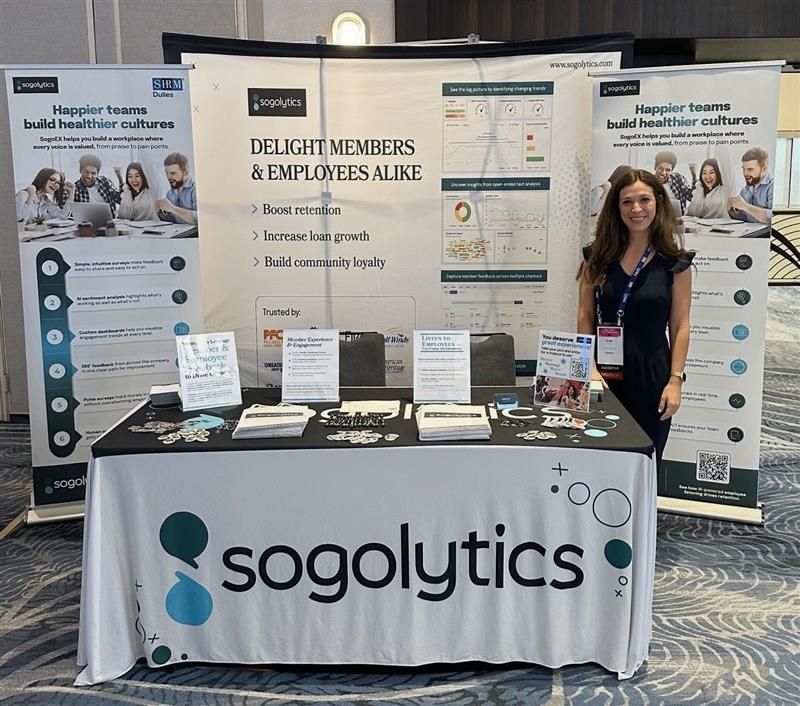It’s back-to-school season, and we’re ramping things up with awesome new features and updates to learn about and enjoy!
Using a sprint model means that we’re able to roll out smaller batches of changes more frequently, which means there’s plenty to keep up with! In case you missed it, the first sprint in this cycle was 30.1, and you can learn more about those features here. If you’re wondering how we jumped ahead to 30.3, it’s because our 30.2 sprint was the SoGoSurvey to Sogolytics rebrand! Maybe you noticed? 😉
Copy that! Doubling up on automation
We all love automation, and Rules & Alerts and Raise A Dialogue are two of our favorites. But what could make them better? Making them even more automatic, of course! Two great updates in this sprint:
- Copy Rules & Alerts and Raise A Dialogue rules within a single project
Why would you ever want to copy existing rules? Plenty of reasons! Let’s say that you’ve set up a Rules & Alerts flow so that the management group at Branch A gets an email each time a customer provides a low rating of the service at Branch A. You spend time making a clear expectation-setting email, including nice piping and a link to the full response, and it looks great! But you also have three more branches, and you want to send similar messages to each relevant management group. Ta-da! Now you can make a copy of the Branch A rule and tweak it a bit to change the condition and recipient list! Even better: If you’re triggering a follow-up Dialogue through our SogoConnect ticketing system instead, your Raise A Dialogue rule can be copied to send the right messages to the right teams to make it even easier to close the loop.

- When copying a project, valid Rules & Alerts and Raise A Dialogue rules will be copied, too
This one’s a huge time-saver, too, especially in CX projects or any forms or surveys that might be live for a long time. To use the same example above: Your customer service CX project is collecting great results, but you’d like to make a few changes to the content — adding new questions, removing existing items — without impacting any existing data. Still — groan! — you don’t want to have to recreate that entire set of Rules & Alerts workflows, right? Now you don’t have to! When you make a copy of your project, all valid Rules & Alerts will be copied, too! Keep in mind, if you’re making changes to the questions the rules are based on, this will obviously affect the rules, too, so be sure to double-check the impact of any changes in the new survey. And remember: If you’ve copied a CX project, the reporting Tags will be copied, too, so data from the newly revised survey will still show up on your CX Dashboard! On with the flow! 😉
Logic goes big!
Okay, this one doesn’t require a lot of explanation, but it does require a visual so you can see just how big it is!
-
- Full-screen Question Display Logic and Branching modals make editing rules easier

What’s next? Post-submission options
“What happens next?” is a key question for everyone designing a survey. What should happen when your participants click Submit? These two updates offer great options!
- Customize text for the URL redirect button on the Thank You page
URL redirect has been around for a while (whether or not you’ve used it!) and its purpose is to send participants to a different site after they’ve submitted your survey. Who goes where? You might use a static redirect (sending everyone to the same site) or a dynamic redirect (sending different participants to different sites). Another choice: Should they see a Thank You page or not? You might send participants to the new link right after they click Submit, or you might show them a Thank You page first. Here’s what’s new: If you choose to display this redirect button on a Thank You page, you can now customize the text of that button to match your brand language style, set expectations, and well, just because you can. 😉

- Scoring variables added to HTTP Targets to streamline workflows in assessment projects
This one’s a bit different because it happens behind the scenes. If you use HTTP Targets (Not yet? Learn more!) to push participants’ response data to other apps or tools you use, you can now raise your game by pushing scoring variables, too! Here’s a use case: The employee onboarding team wants to monitor how new hires are doing on their training assessments. HTTP Targets let them set a rule so that when new hires submit their exams, a notification pops up on the employee onboarding team Slack group to share the person’s details and score. If the team notices any concerns, they can discuss in the same Slack channel and coordinate any follow-up. Score!
More segmentation, please!
Can we possibly say enough about how great Omni segmentation is? Well, we can try! 😉 From question-level segmentation to report-level segmentation to segmentation in Omni Scores… segmentation gives us more to love in our own data!
- When adding variables in Omni question-level segmentation, now “apply to all” with a single click
Adding a Variable in segmentation makes it easy to see the gaps between specific data sets. For example, if you’d like to see the change in a specific metric from 2021 to 2022, you can apply segmentation using the year question and add a simple calculation (2022 – 2021, in this case) to see the difference. Your report will clearly show the difference, and whether it’s positive or negative. Sound good? Apply this calculation and display to all of the questions in your report!

- Conditional Segment Display now available for Segmentation Data Sets
ALSO
- Fetch data from all Track records at once by API
- When emailing saved Omni reports, choose whether to allow recipients to filter and/or drill down to individual responses
- Simplify display by showing only the first 100 responses to open-ended questions in Omni PPT and PDF exports
- Execution frequency of HTTP Targets increased
- Greater control over template bank categories
- UI updates to Rules & Alerts and Raise a Dialogue flows
Yes, this is just the quick list, but there’s more around the corner! Log in and explore what’s new, stay tuned for what’s next, and let us know what you think!














